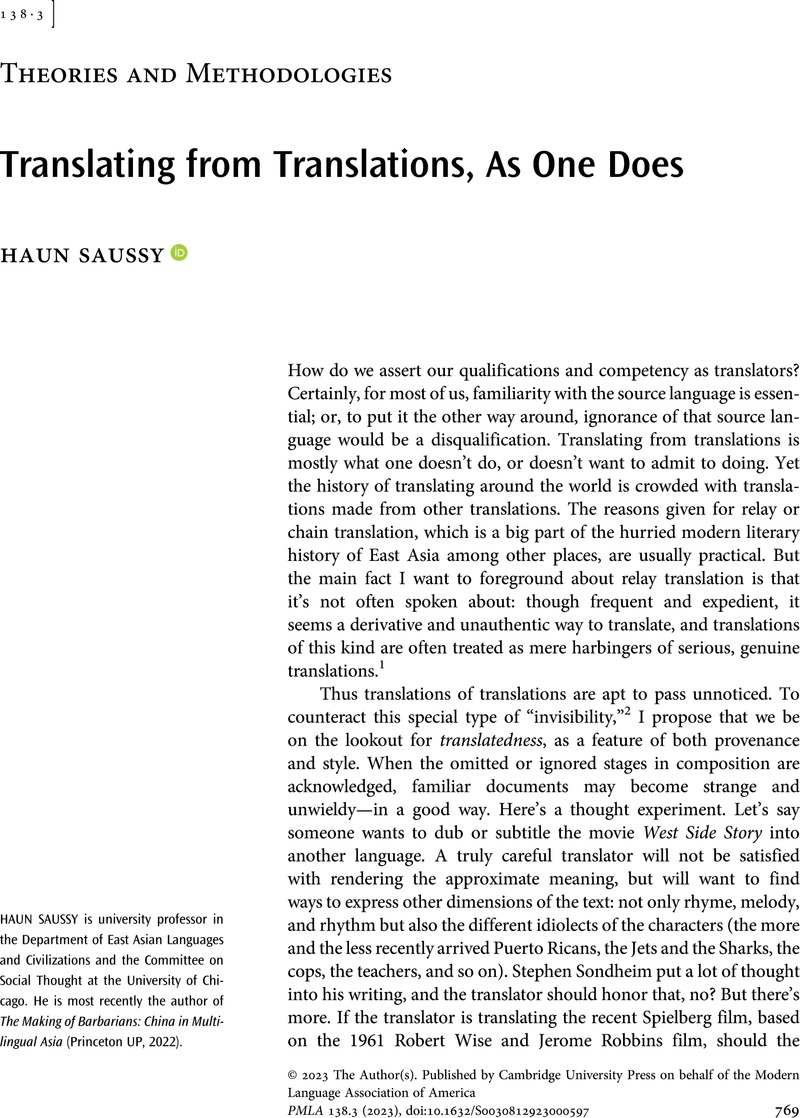No CrossRef data available.
Article contents
Translating from Translations, As One Does
Published online by Cambridge University Press: 12 September 2023
Abstract
An abstract is not available for this content so a preview has been provided. Please use the Get access link above for information on how to access this content.

Information
- Type
- Theories and Methodologies
- Information
- Copyright
- Copyright © 2023 The Author(s). Published by Cambridge University Press on behalf of the Modern Language Association of America
References
Works Cited
Breton, André. “Second manifeste du surréalisme.” La révolution surréaliste, vol. 12, 1929, pp. 1–14.Google Scholar
Cho, Heekyung. Translation's Forgotten History: Russian Literature, Japanese Mediation, and the Formation of Modern Korean Literature. Harvard University Asia Center, 2016.Google Scholar
Coldiron, A. E. B. “Visibility Now: Historicizing Foreign Presences in Translation.” Translation Studies, vol. 5, no. 2, 2012, pp. 189–200.CrossRefGoogle Scholar
Lorentzatos, Zisimos, translator. Ἔζρα Πάουντ: Κατάη [Ezra Pound: Katai]. S. M. Tarousopoulos, 1950.Google Scholar
Pound, Ezra. Cathay: A Critical Edition. Edited by Billings, Timothy, Fordham UP, 2019.Google Scholar
Saussy, Haun. “Contagious Rhythm: Verse as a Technique of the Body.” Critical Rhythm, edited by Glaser, Ben and Culler, Jonathan, Fordham UP, 2018, pp. 106–27.Google Scholar
Spitzer, Leo. “Learning Turkish.” Translated by Tülay Atak. PMLA, vol. 126, no. 3, May 2011, pp. 763–79.Google Scholar
Spitzer, Leo. Linguistics and Literary History: Essays in Stylistics. Russell and Russell, 1951.Google Scholar
Venuti, Lawrence. The Scandals of Translation: Towards an Ethics of Difference. Routledge, 1998.CrossRefGoogle Scholar
Venuti, Lawrence. The Translator's Invisibility: A History of Translation. 2nd ed., Routledge, 2008.Google Scholar

